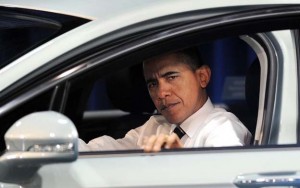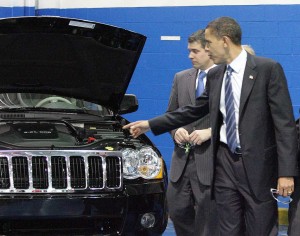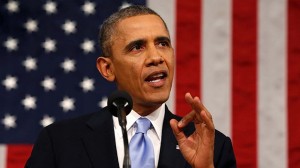In the run-up to the 2008 presidential election, then-candidate Barack Obama found himself focused on an American auto industry plunging into one of the worst downturns in its history. Among his first duties as president, Obama approved billions of dollars in loans to keep two of Detroit’s bankrupt automakers afloat.
Now, as the two-term president enters his last year in the White House, he’s heading to Detroit for what might be dubbed a victory lap, a chance to see firsthand an industry reporting record sales and, for many companies, record profits.
As the center of the trip, President Obama will make a stop at the 2016 North American International Show which opened its doors to the public last Saturday after a two-day media preview that brought the debut of about 50 new cars, trucks, crossovers and concept vehicles. Preliminary attendance suggests turnout for the show could also reach record numbers.
The president’s attention could be diverted by a new crisis, however. Obama has issued an emergency declaration for the City of Flint, a once-thriving automotive center and the birthplace of General Motors. In recent years, however, it has lost most of its manufacturing base and nearly half of its population lives below the poverty level.

The President during a prior visit to the Washington Auto Show. This will be his first to the NAIAS.
When an emergency manager was appointed to take charge of Flint in 2014, a switch was ordered, taking the city off the Detroit water system, instead pumping what turned out to be corrosive and improperly treated water from the Flint River. That has caused lead to leach out of the city’s old pipes. Health authorities are still running tests, but preliminary data show a large number of residents – including many children – with dangerously elevated levels in their blood.
The crisis led Michigan’s Governor Rick Snyder – who appointed the emergency manager — to offer an extended apology during a speech this week. For his part, Pres. Obama met with Flint’s Mayor Karen Weaver over the weekend, and additional federal aid may follow. But it is likely to pale in comparison to the bailout that was offered both General Motors and Chrysler.
(How will the lifting of Iranian sanctions impact the auto industry? Click Here to find out.)
President George W. Bush actually took the first step, authorizing $17 billion to keep the two makers afloat during the final months of his administration. The new president had to up the ante, however, as GM and Chrysler filed for bankruptcy in early 2009. By the time they emerged from Chapter 11 protection the federal government had $80 billion at risk.
It eventually would recover all but $9.5 billion of that, proponents of the bailout, including the president, arguing that more than 1 million jobs might have been otherwise lost, costing the economy far more in the near-term alone.
The bailout remains controversial, and played a role in the 2012 election. Support in the key state of Ohio – a major auto manufacturing center — may have secured a second term for Obama, however, as residents turned against challenger Mitt Romney who openly opposed the bailout.
(47 cents a gallon? Click Here to see how low gas prices might go.)
The second term has brought its own controversies. The National Highway Traffic Safety Administration took some of the heat for a series of industry safety lapses, including a delayed recall of GM ignition switches blamed for more than 120 deaths, and the recall of more than 19 million vehicles equipped with faulty Takata airbags.
A new administrator, Mark Rosekind, has promised to shake-up NHTSA. And the agency and its parent Department of Transportation made major news at the Detroit Auto Show last week by announcing a series of steps aimed at radically improving motor vehicle safety.
Among other things, the White House is seeking $4 billion to begin setting up a nationwide connected car network. It also plans to take ease rules that might otherwise delay the development of autonomous vehicles.
On Friday, Rosekind and Transportation Secretary made a second visit to the auto show to meet with leaders of 18 automakers, including GM CEO Mary Barra and her Fiat Chrysler counterpart Sergio Marchionne. Their new industry-government consortium is aimed at speeding up the development of new safety technologies.
Though highway fatalities are down 40% since the 1970s, 32,000 Americans died on the road in 2014. Rosekind and many of the executives on hand for the Friday announcement now believe it is possible to reach zero fatalities in the years ahead. If they even come close, that could prove to be the single biggest automotive legacy of the Obama Administration.
(Click Here for more on the new safety consortium.)


